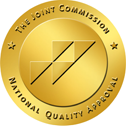As people talk about drug addiction, there may be certain mental images come to one’s mind. Often, the imagined scene is filled with the sight of illegal drugs being taken at parties or used on the streets. In fact, one of the most common types of drug abuse today is that of prescription drugs, especially prescription painkillers. The number of deaths each year from prescription drug overdoses has more than tripled since 1990, according to the CDC. The National Institute on Drug Abuse reports that for people over the age of 14, prescription drugs are the second most popular substances for abuse, trailing only marijuana.
Pain Management Drugs Taken Too Far
Painkillers, especially opioid painkillers such as Oxycontin or Vicodin, are among the more serious and potentially dangerous classes of prescription drugs that are commonly abused. These drugs have a basic chemical similarity to all other opioids, including morphine and heroin. The characteristics that make them highly effective for pain management when used correctly under a doctor’s supervision also make them highly dangerous when abused.
Not everyone develops addictions to painkillers easily. It appears that some people are born with a genetic predisposition to it because of the way their bodies interact with these types of drugs. Opioids stimulate the brain’s pleasure centers and create a false sense of wellbeing. For some people, this sensation of pleasure is very strong. Other people may experience nausea or dizziness that negate any sense of pleasure. Still others may experience a much milder effect from the drug, which is enjoyable while it lasts but creates no urgent sense of wanting more.
Individuals who experience a very strong sense of pleasure and well-being on pain medication will have a much greater temptation to keep taking the painkiller, and are more likely to take more than prescribed. Additionally, the individual is apt to continue to take the pain killer despite resolution of the medical condition that led to the prescription.
Easy to Come By
Prescription drugs, even powerful painkillers, don’t have the same stigma of illegal drugs. Some individuals who would never consider taking heroin or crystal meth will use, and potentially abuse, drugs that are available by prescription or over the counter. Taking large doses of some painkillers can produce physical effects similar to some illegal drugs. Crushing tablets into powder and either snorting or injecting them heightens the physical effects of the drug by getting it into the bloodstream much more quickly.
Part of the rise in prescription painkiller abuse is greater availability. The CDC says that the sale of these drugs has risen 300 percent since 1999, mirroring the rise in abuse and overdose deaths. This increase in the number of prescriptions for strong painkillers means that people are exposed to them more frequently via legitimate prescriptions. Still more people are exposed to them when friends or family share their leftover pills, not realizing how dangerous it is to give someone prescription drugs that aren’t prescribed for them. This is how many prescription drug addictions begin.
Warning Signs
Specific warning signs for prescription painkiller addiction include taking larger doses over time, as a person grows more tolerant of the drug, and continuing to take painkillers after the medical reason for them has ended. Social withdrawal, changes in daily habits and hygiene, and personality changes are also warning signs. If a person spends a lot of time and energy pursuing prescriptions, including driving long distances or seeing multiple doctors, they may be trying to maintain a prescription drug addiction.
People who suffer from opioid addiction may start neglecting responsibilities to their family and friends. Their work performance suffers invariably as a result of the drugs cognitive effects. They stop taking pleasure in the same things they used to enjoy, as use of the drug hijacks their brain’s normal pleasure and reward systems. As addiction to the drug grows, the brain becomes convinced that the drug is more important than anything else, making other things seem less important by comparison.




